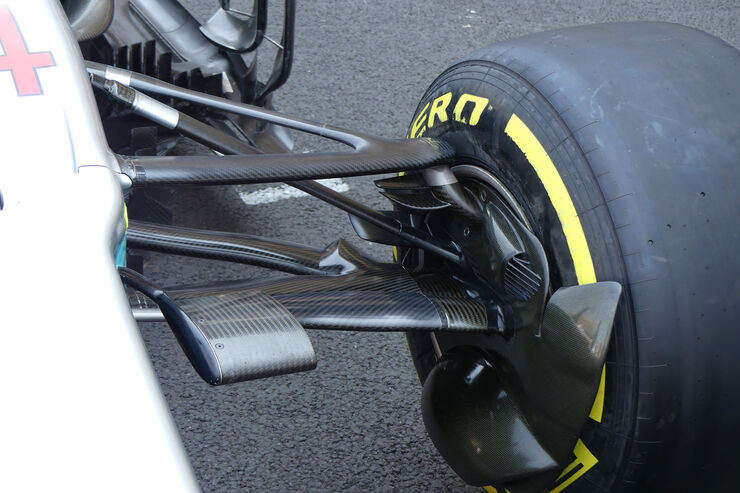
The W08 & STR12 might have it, depending on where the lower suspension arm pivot is located within the wheel. In the image above, the green and yellow circles represent speculated locations for the wheel upright's lower pivot. The grey circle is the upper pivot. The vertical orange line is the wheel cover face. The pushrod axis is emphasized with a cyan line, and the lower suspension arm is emphasized with a purple line.
If so, the tire contact patch will rotate around the inside of the kingpin axis, rather than around the outside of it (positive scrub), or about itself (zero scrub radius). This will influence how the tire contact patch changes shape, steering forces, how the tire body is presented to airflow, etc. To what benefit?
Notice how long the interface is between the wheel cover and the lower suspension arm:
This may suggest that the end of the arm is rather far inside the wheel.





